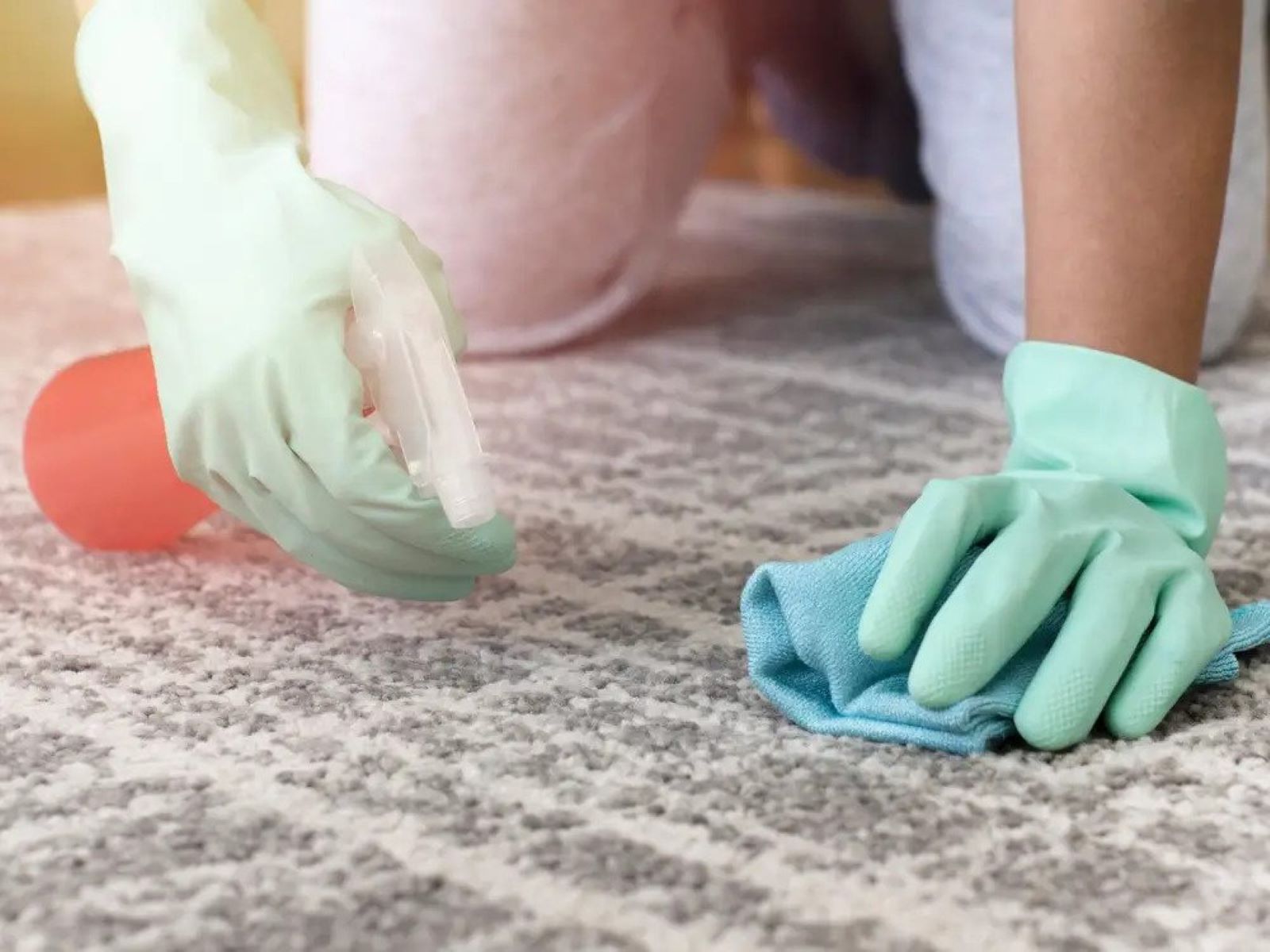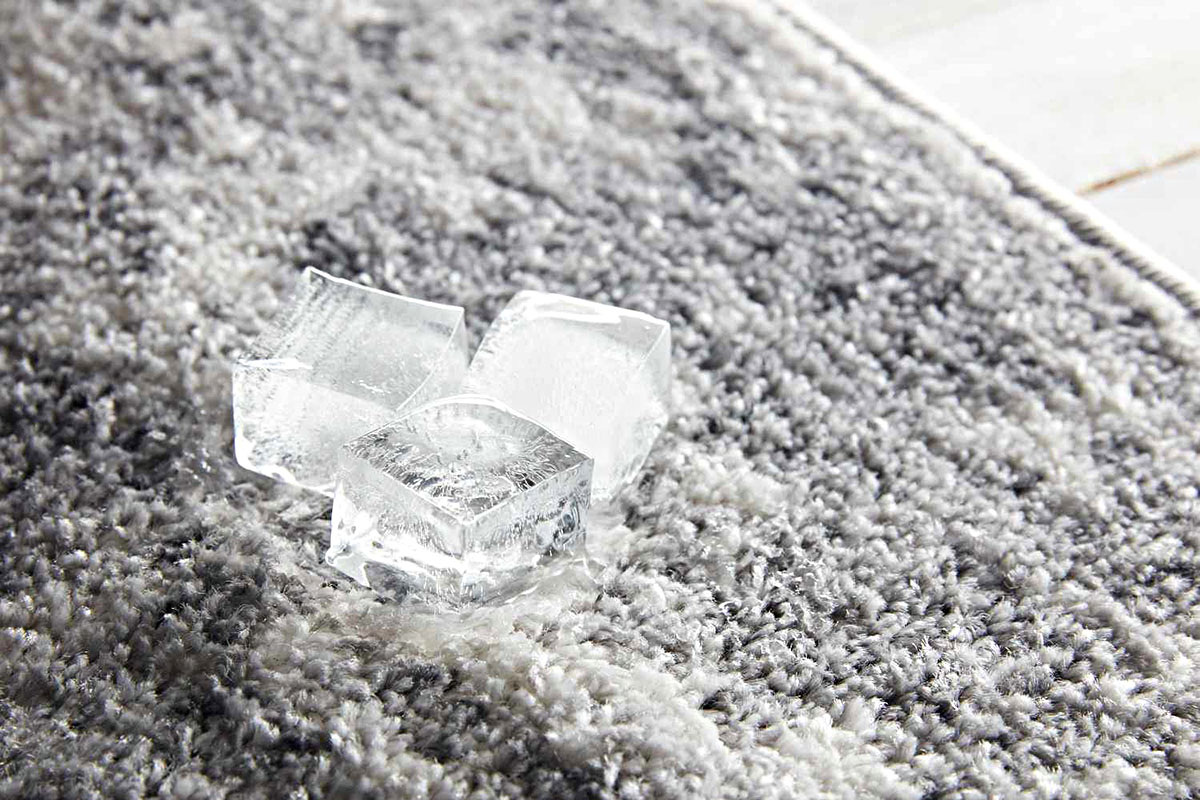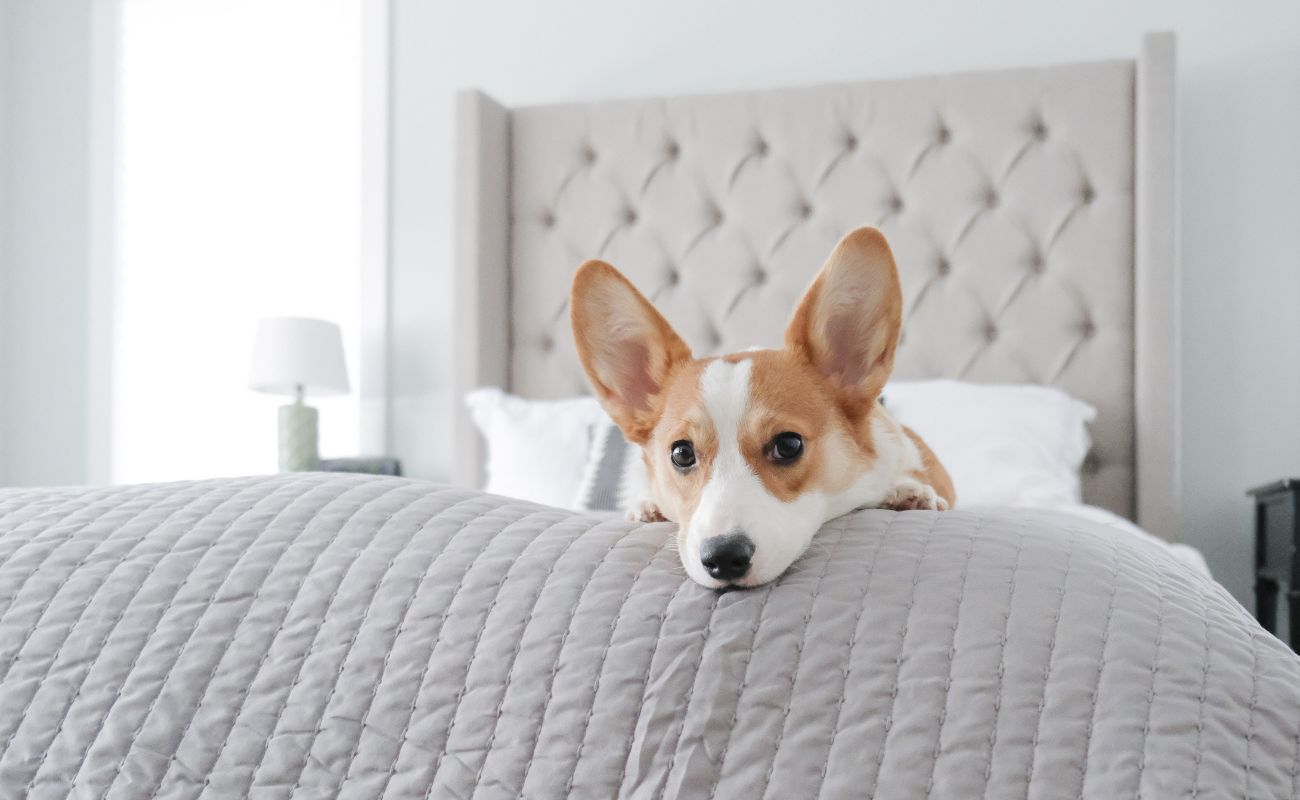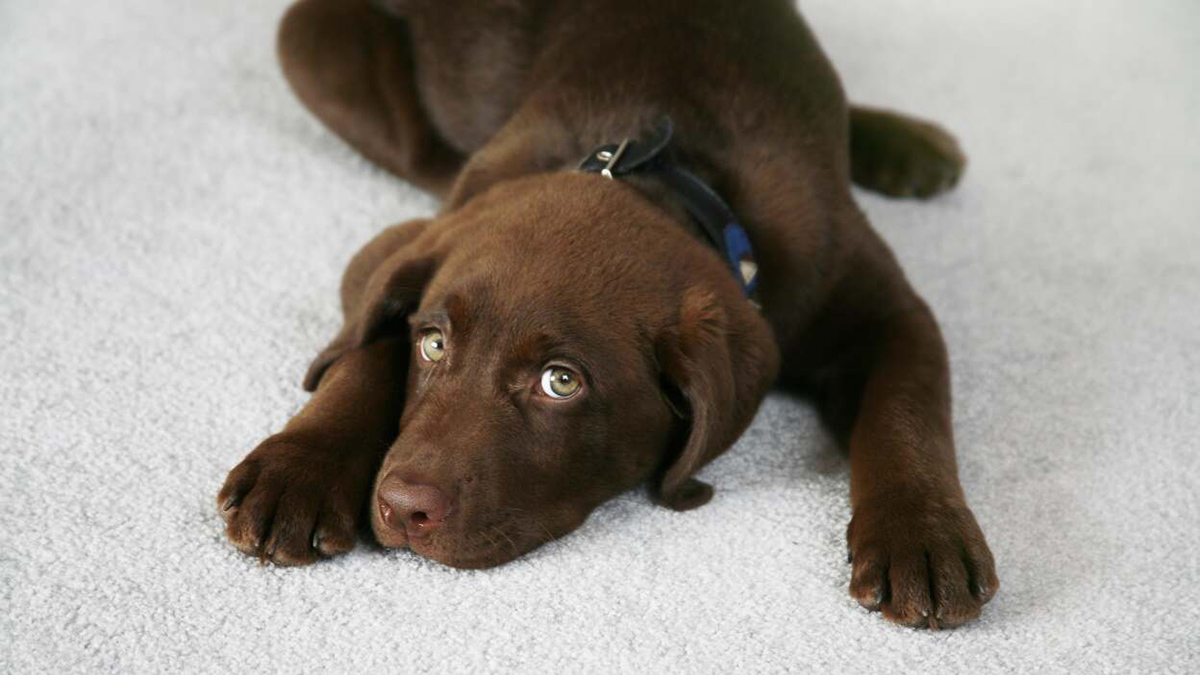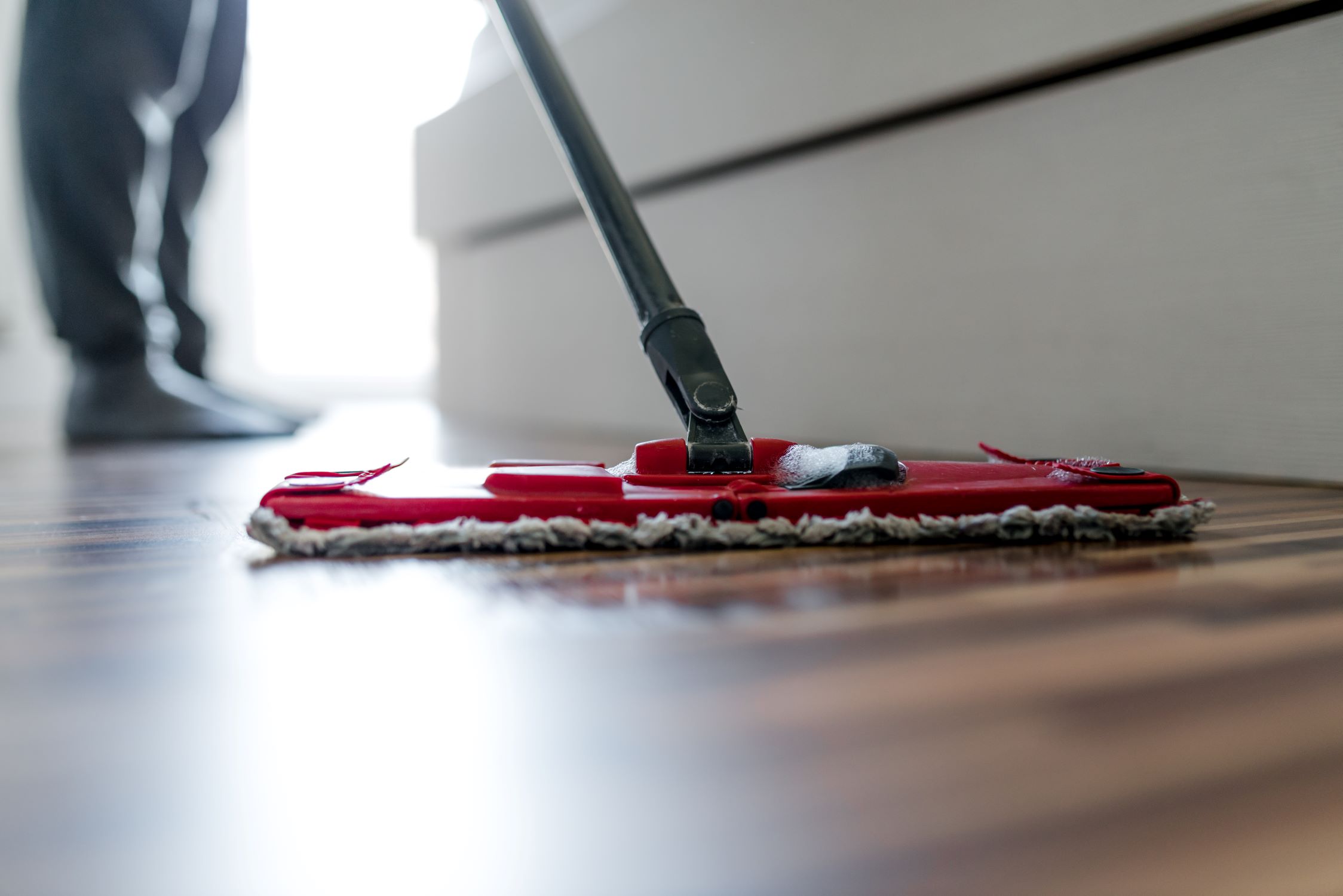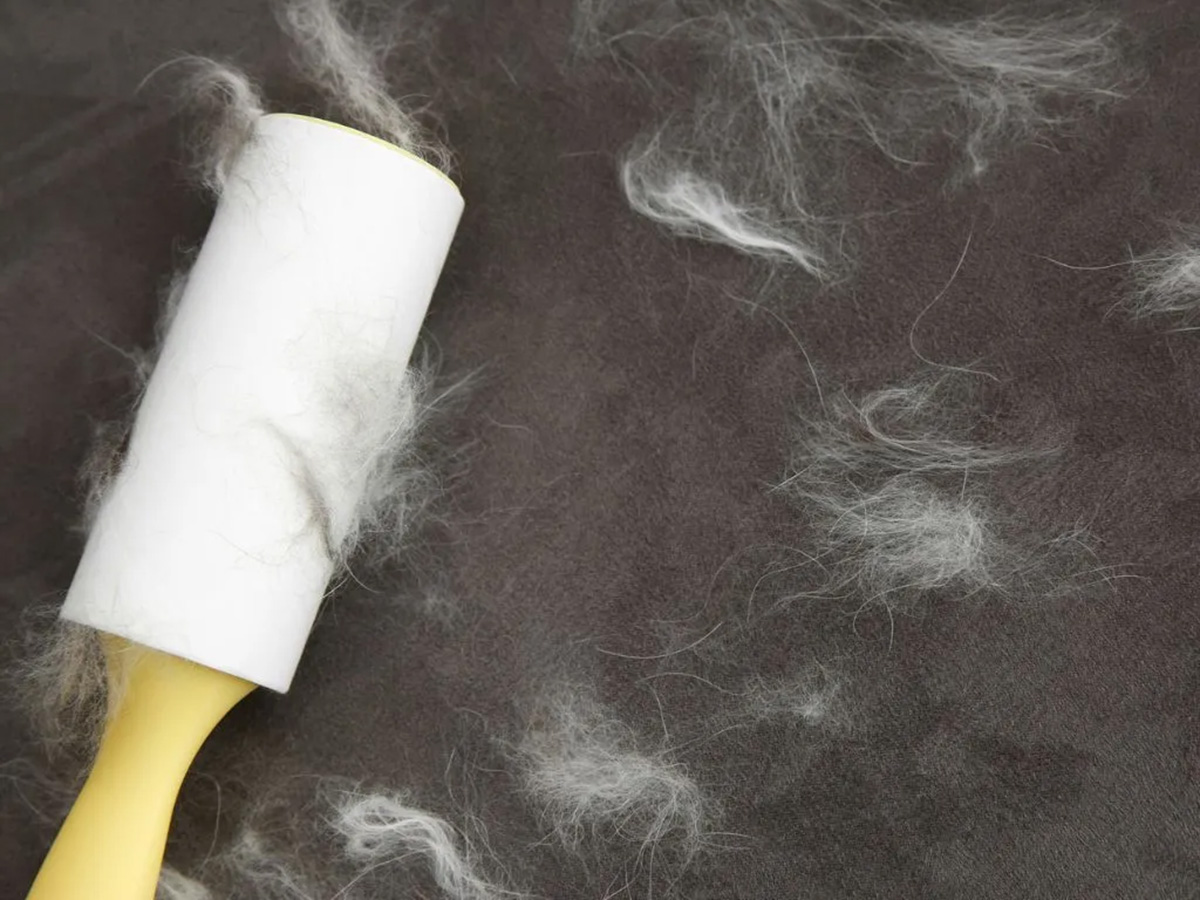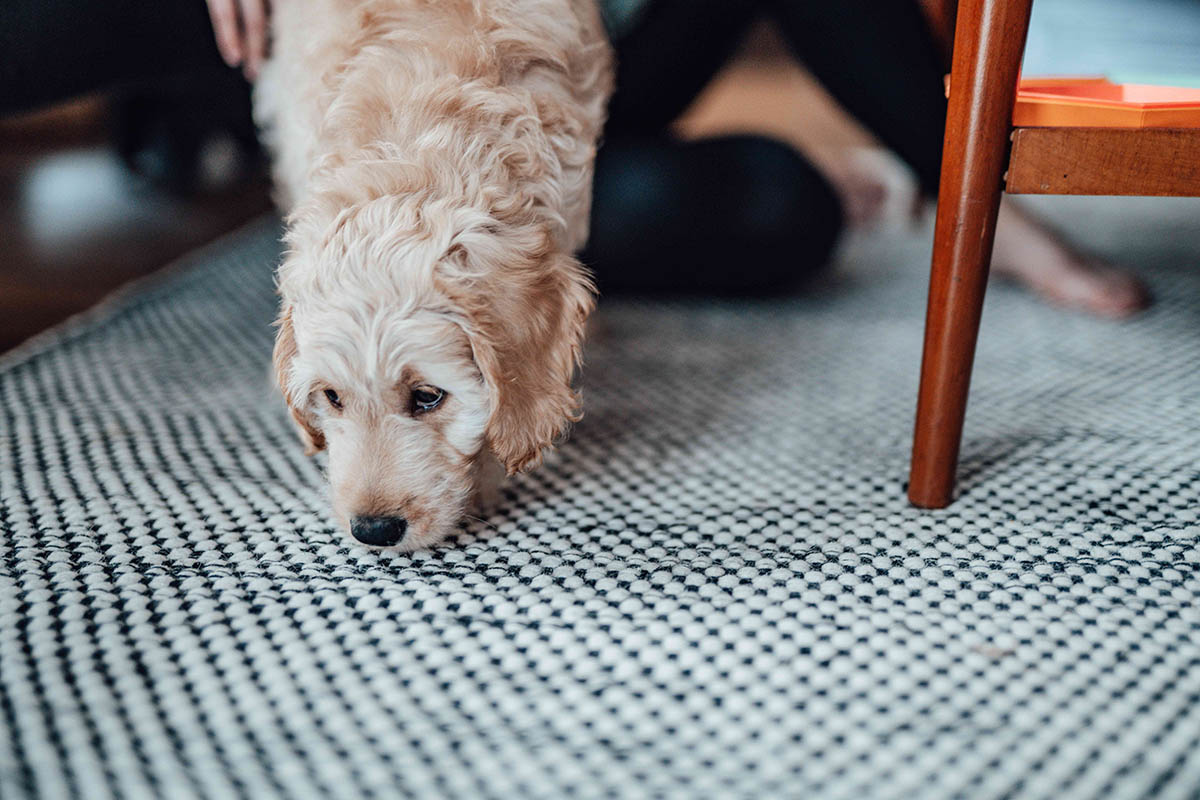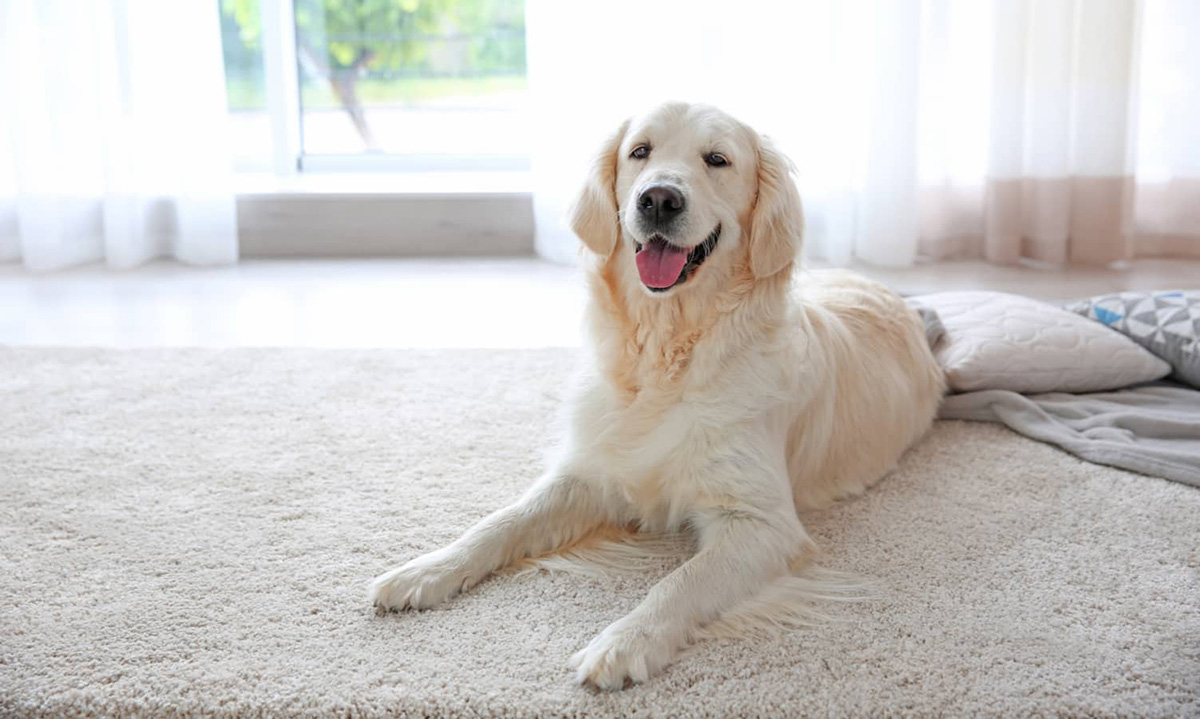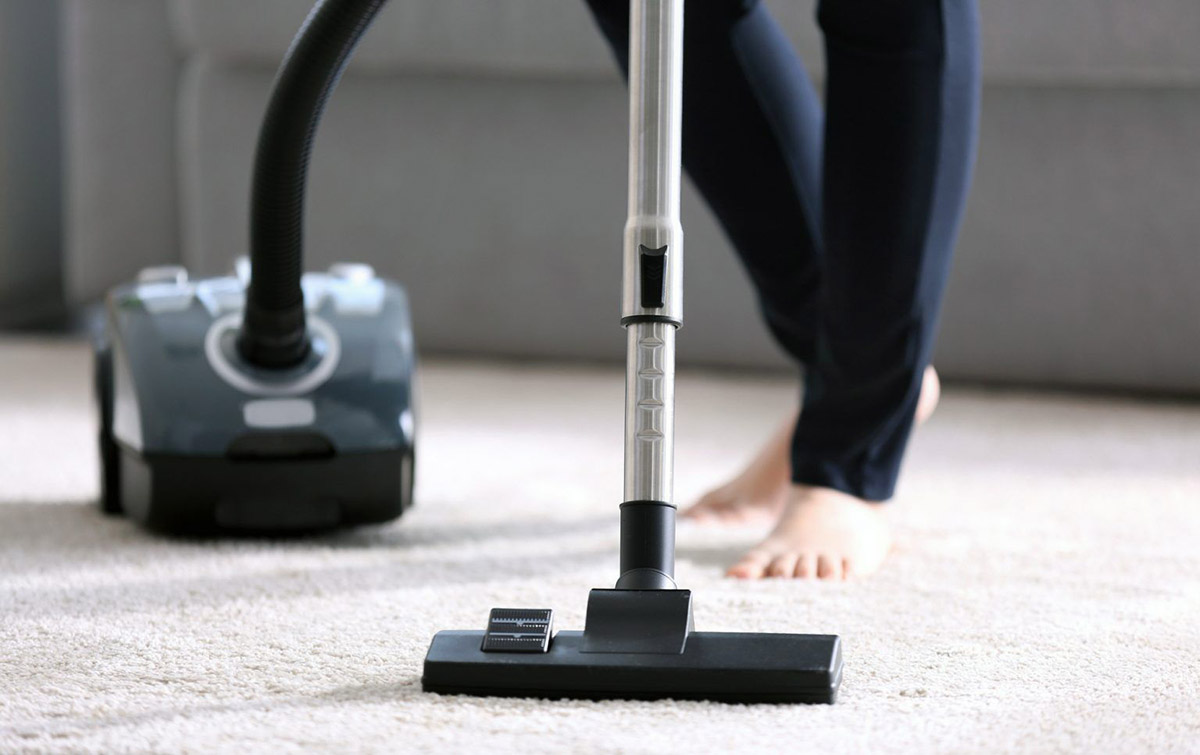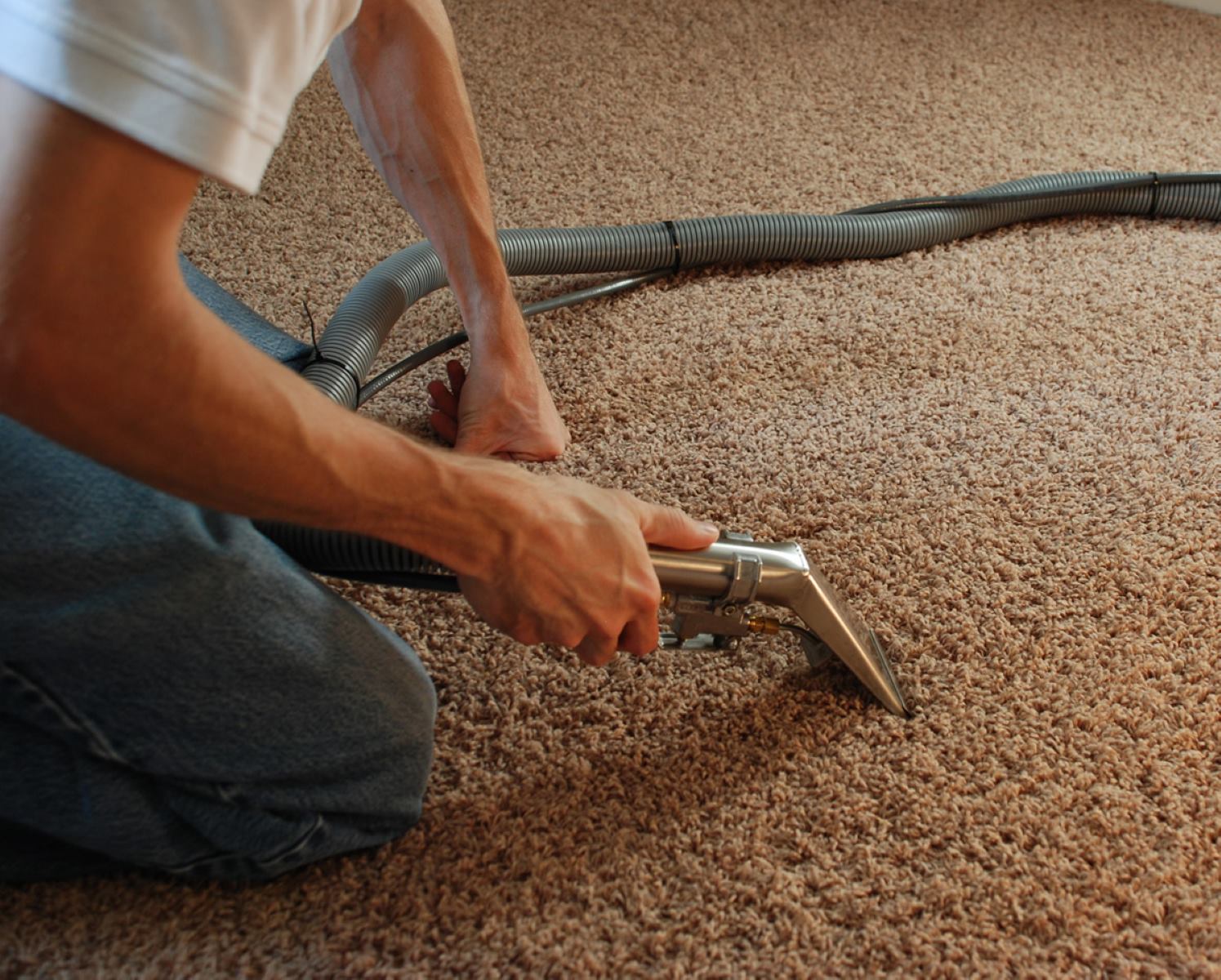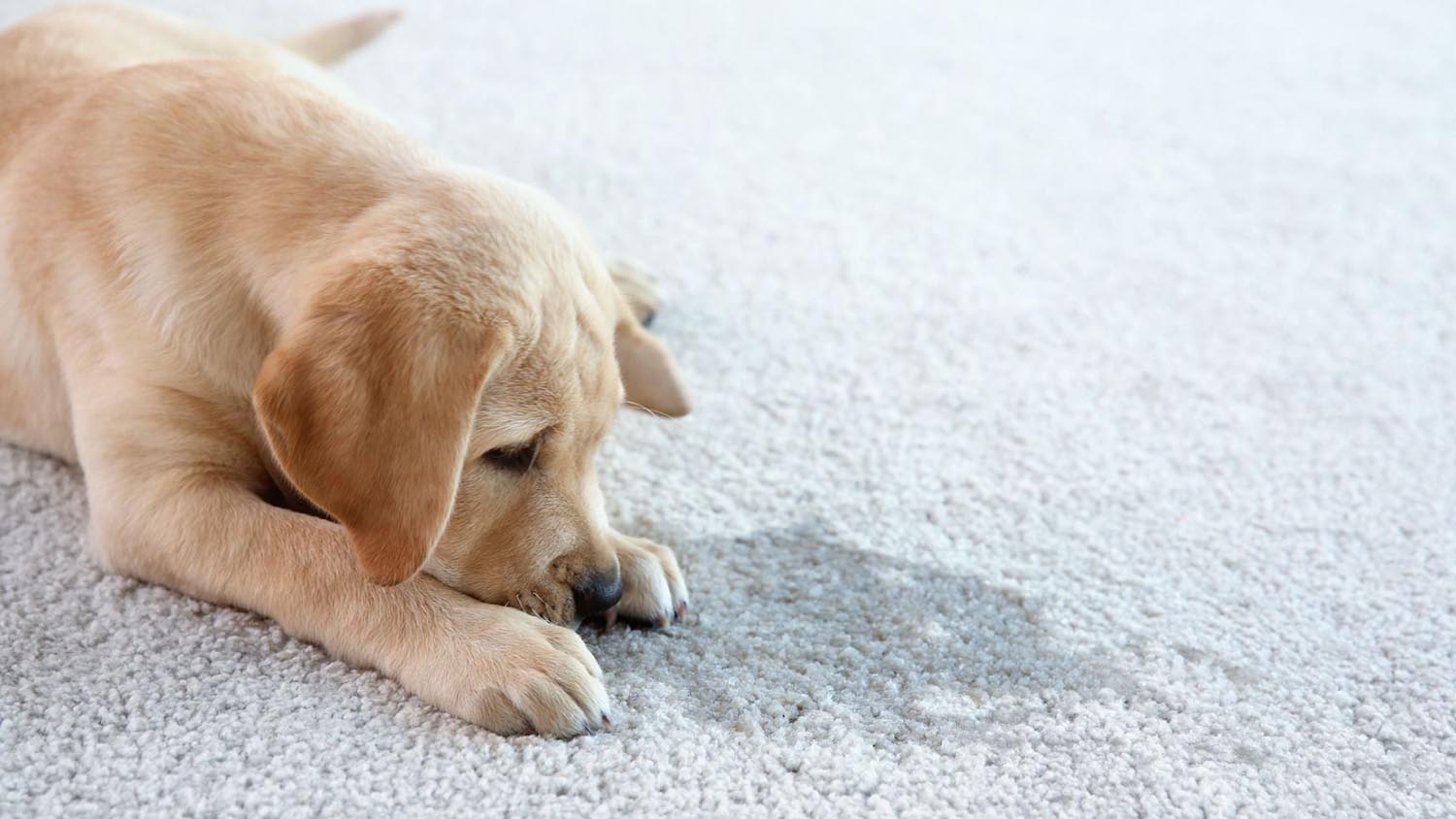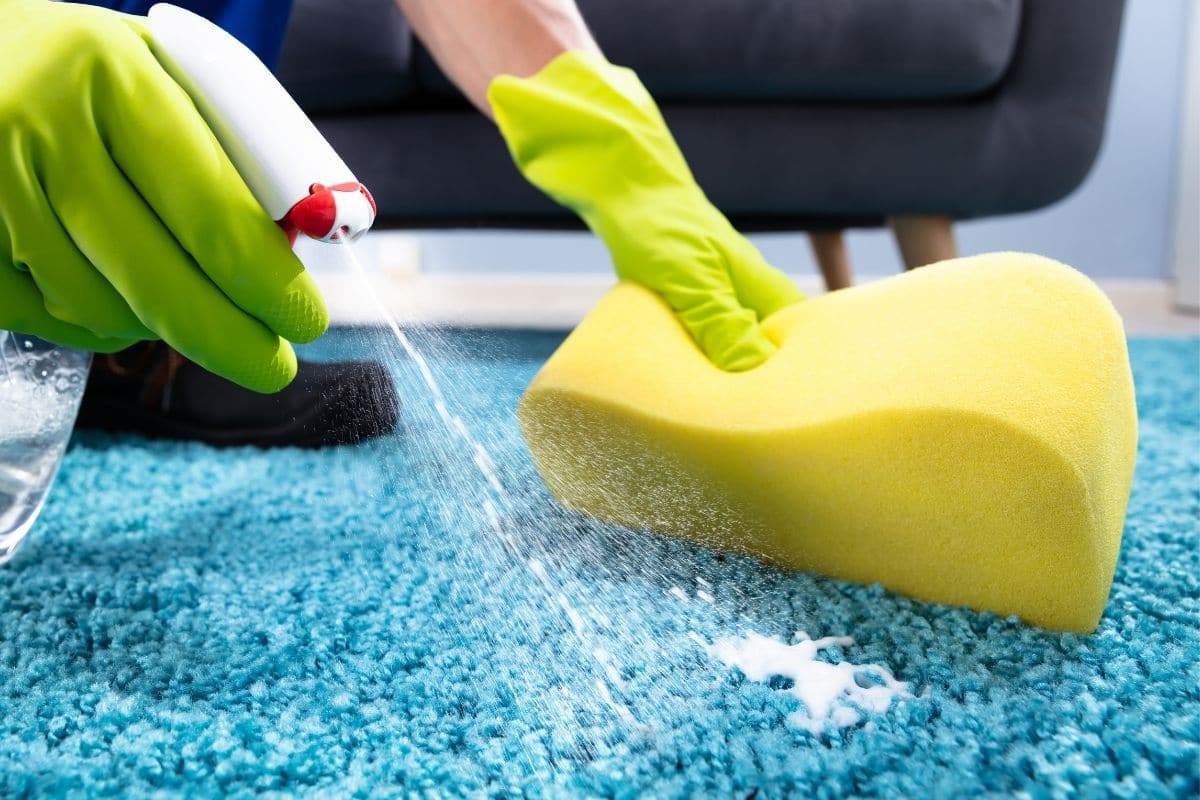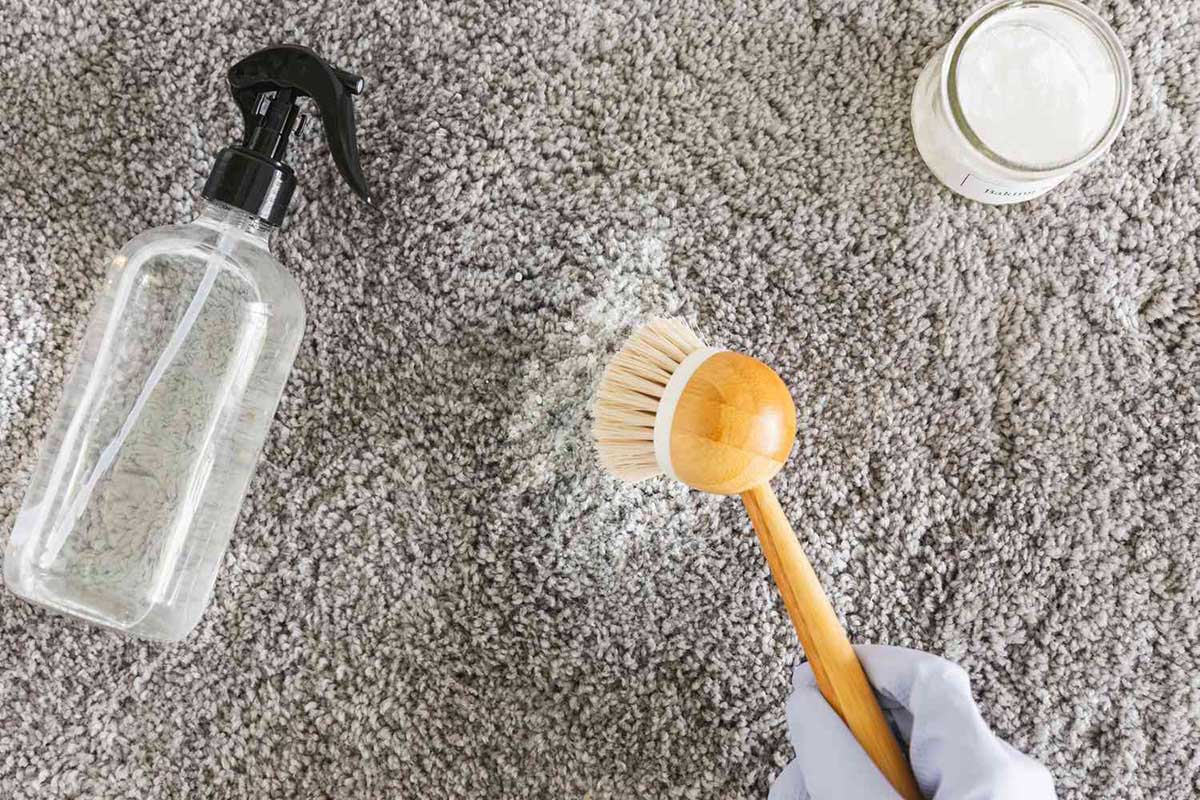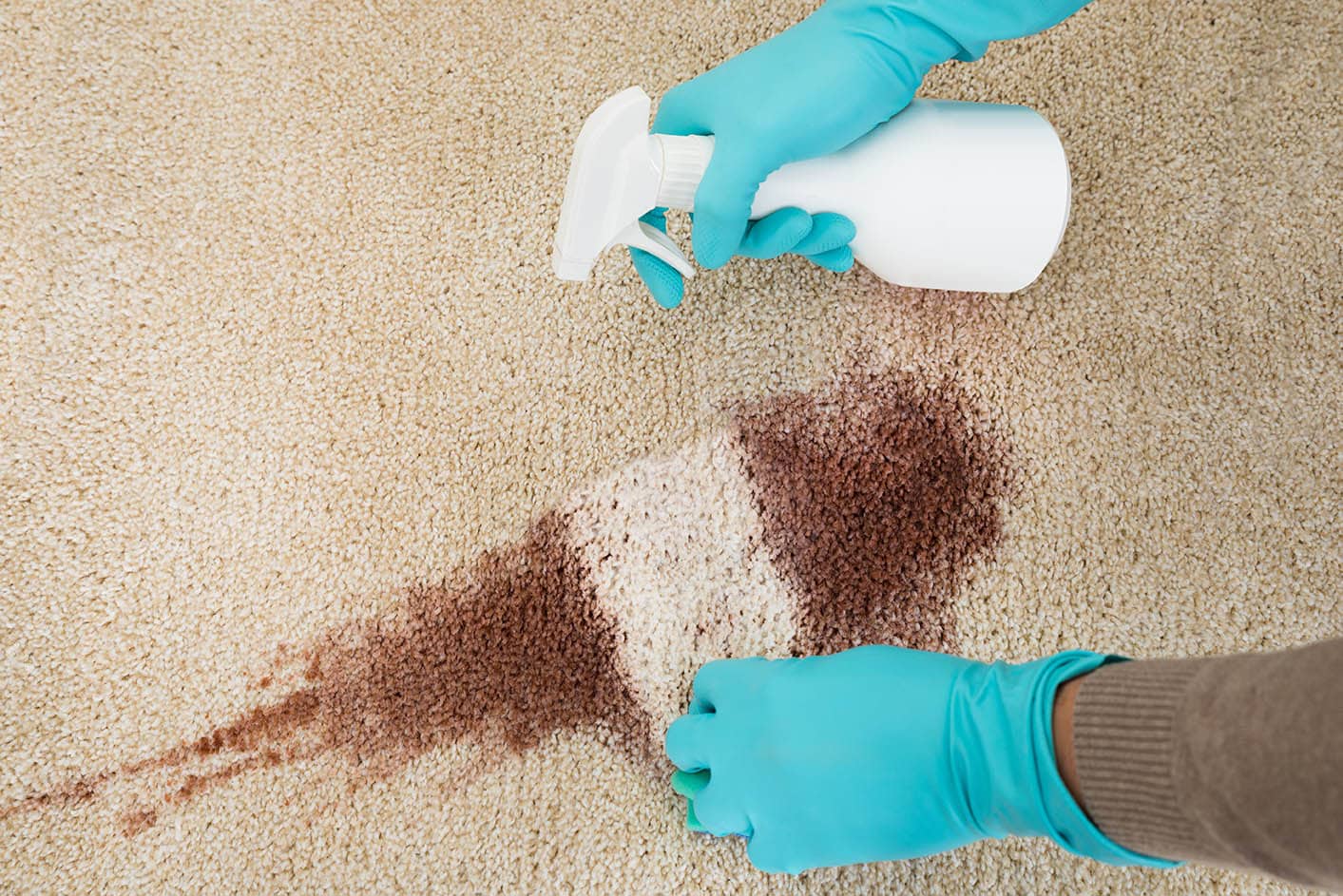

Articles
How To Get Rid Of Dog Diarrhea On A Carpet
Modified: August 27, 2024
Discover effective articles on how to remove dog diarrhea stains from carpets and keep your home clean and odor-free.
(Many of the links in this article redirect to a specific reviewed product. Your purchase of these products through affiliate links helps to generate commission for Storables.com, at no extra cost. Learn more)
Introduction
Dealing with dog diarrhea on a carpet can be a messy and unpleasant situation. Whether it’s a puppy with a sensitive stomach or a senior dog with digestive issues, accidents happen, and it’s important to know how to effectively clean up the mess and eliminate any lingering odors. In this article, we’ll guide you through the step-by-step process of getting rid of dog diarrhea on a carpet, ensuring a clean and fresh-smelling home.
Before we dive into the cleaning process, it’s crucial to understand the causes of dog diarrhea. There are several reasons why dogs may experience loose stools, including dietary changes, food allergies, intestinal parasites, bacterial infections, or even stress. It’s important to address the underlying cause of your dog’s diarrhea and consult with a veterinarian if the issue persists or worsens.
Now, let’s get started with the cleaning process. Remember to act quickly to prevent the stain from setting and to minimize the chances of the odor seeping into the carpet fibers.
Key Takeaways:
- Act quickly to remove solid waste and excess liquid from the carpet to prevent staining and odors from setting in, and use gentle cleaning solutions to effectively clean and sanitize the affected area.
- Understand the potential causes of dog diarrhea to address underlying issues, and take proactive measures to prevent future accidents by maintaining a healthy environment for your furry friend.
Read more: How To Get Rid Of Slime On A Carpet
Understanding the Causes of Dog Diarrhea on a Carpet
When your dog has an episode of diarrhea on your carpet, it’s crucial to understand the potential causes to address the issue effectively. Here are some common reasons dogs may experience loose stools:
- Dietary changes: Dogs have sensitive stomachs, and sudden changes in their diet can cause digestive upset and diarrhea. Introducing new foods too quickly or switching to a different brand of dog food without a gradual transition can lead to loose stools.
- Food allergies or intolerances: Just like humans, dogs can develop allergies or sensitivities to certain ingredients in their food. If your dog’s diarrhea is accompanied by other signs of food allergies, such as vomiting or excessive itching, it may be a result of an adverse reaction to certain ingredients.
- Intestinal parasites: Worms and other parasites can wreak havoc on a dog’s digestive system, leading to diarrhea. Common parasites include roundworms, hookworms, and giardia. Regular deworming and maintaining good hygiene can help prevent these issues.
- Infections: Bacterial or viral infections can cause gastrointestinal upset and diarrhea in dogs. Common bacterial infections include salmonella and campylobacter, while viral infections like parvovirus can be severe and require immediate veterinary attention.
- Stress or anxiety: Dogs are susceptible to stress, which can manifest as digestive issues, including diarrhea. Events such as moving to a new home, changes in routine, or separation anxiety can trigger these stress-induced episodes.
It’s important to remember that while occasional episodes of diarrhea may not be cause for immediate concern, prolonged or severe diarrhea can lead to dehydration and other complications. If your dog’s diarrhea persists for more than 24 hours, is accompanied by other concerning symptoms, or if you notice blood in the stool, it’s crucial to seek veterinary advice.
By understanding the potential causes of dog diarrhea, you can take appropriate steps to address the underlying issue and minimize the chances of future accidents on your carpet. Let’s move on to the step-by-step process of cleaning up dog diarrhea on a carpet.
Step 1: Remove Solid Waste
The first step in cleaning up dog diarrhea on a carpet is to remove any solid waste. Use disposable gloves or plastic bags to pick up the solid waste and place it in a plastic bag for proper disposal. Avoid smearing or spreading the waste further into the carpet fibers during this process. If necessary, you can use a paper towel or a plastic scraper to gently lift the solid waste off the carpet.
Be careful not to press too hard or rub the area, as this can push the waste deeper into the carpet and make the cleaning process more challenging. If the solid waste is still wet and sticky, you can place a few paper towels on top to absorb excess moisture before attempting to remove it.
Once you’ve removed the solid waste, place it in a sealed bag and dispose of it in an outdoor trash container. Remember to wash your hands thoroughly with soap and water afterward to prevent the spread of any potential bacteria.
Now that you’ve successfully removed the solid waste, it’s time to move on to the next step: blotting up excess liquid.
Step 2: Blot Up Excess Liquid
After removing the solid waste, it’s essential to address any excess liquid left behind from the dog diarrhea. Grab a stack of clean, absorbent paper towels or a clean cloth and gently blot the affected area. Press down firmly to absorb as much liquid as possible, being careful not to rub or scrub the carpet. Blotting helps prevent the diarrhea from soaking further into the carpet fibers and spreading the stain.
Continue blotting until you’ve removed as much liquid as possible. If the diarrhea is particularly watery or has deeply penetrated the carpet, you may need to repeat this step with fresh paper towels or a cloth.
It’s crucial to act quickly during this step to prevent the moisture from seeping into the carpet padding, which can lead to further staining, odor, and potential mold growth. The sooner you address the excess liquid, the better chance you have of minimizing the overall damage to the carpet.
Once you’ve blotted up the excess liquid, it’s time to move on to preparing a cleaning solution to effectively remove the stain and sanitize the area.
Step 3: Prepare a Cleaning Solution
Preparing a cleaning solution is an important step in effectively removing the stain and sanitizing the area after dog diarrhea on a carpet. Here’s how to make a DIY cleaning solution:
- Mixing detergent and water: Start by combining a teaspoon of mild dishwashing detergent with a cup of lukewarm water. Avoid using harsh chemicals or bleach, as they can damage the carpet fibers or leave behind a strong odor.
- Vinegar solution: Another effective option is to mix equal parts of white vinegar and water. Vinegar is known for its natural cleaning properties and can help neutralize odors.
- Baking soda paste: For stubborn stains or lingering odors, you can create a paste using baking soda and water. Mix enough baking soda with water to form a spreadable paste. Baking soda is known for its odor-absorbing properties and can help eliminate smells.
Choose the cleaning solution that suits your preference and the severity of the stain. Remember to test the solution on a small, inconspicuous area of the carpet first to ensure it doesn’t cause any discoloration or damage.
Now that you have a cleaning solution ready, move on to the next step: cleaning the stained area.
Blot up as much of the diarrhea as possible with paper towels, then clean the area with a mixture of water and white vinegar. Finally, sprinkle baking soda on the area to absorb any remaining odor.
Read more: How To Get Rid Of Fleas On Carpet
Step 4: Clean the Stained Area
Now that you have prepared a cleaning solution, it’s time to clean the stained area left behind by the dog diarrhea. Follow these steps to effectively remove the stain:
- Apply the cleaning solution: Dip a clean cloth or sponge into the cleaning solution and gently dab it onto the stained area. Avoid saturating the carpet with excessive liquid, as this can lead to further damage or moisture absorption. Start from the outer edges of the stain and work your way toward the center.
- Gently scrub: Using a soft-bristle brush or a clean cloth, gently scrub the stained area in a circular motion. Be careful not to scrub too aggressively, as it can damage the carpet fibers or spread the stain further. Continue scrubbing until the stain starts to lift.
- Blot the area: Once you have scrubbed the stain, use a clean cloth or paper towels to blot the area and absorb the cleaning solution along with any remaining stain. Press down firmly with the cloth to absorb as much liquid as possible.
- Repeat if necessary: If the stain persists, you may need to repeat the process by applying more cleaning solution and gently scrubbing the area. Stubborn and older stains may require multiple rounds of cleaning to achieve the desired result.
Remember to take breaks between scrubbing to allow the cleaning solution to work and avoid over-saturating the carpet. Patience and persistence are key to successfully removing the stain.
Once you are satisfied with the stain removal, move on to the next step: rinsing and repeating the process if necessary.
Step 5: Rinse and Repeat
To ensure that you have thoroughly cleaned the stained area after dog diarrhea on a carpet, it’s important to rinse the cleaning solution and repeat the process if necessary. Here’s what you need to do:
- Rinse with clean water: After scrubbing and blotting the stained area, dampen a clean cloth with plain water and gently blot the area to rinse away any remaining cleaning solution. This step helps remove any residue and prevents the cleaning solution from attracting dirt or leaving behind a sticky residue.
- Blot and dry: Once you have rinsed the area, use clean paper towels or a dry cloth to blot the spot and absorb excess moisture. Press down firmly to remove as much water as possible.
- Inspect the area: Take a close look at the carpet to assess whether the stain has been completely removed. If there is still a visible residue or lingering odor, you may need to repeat the cleaning process mentioned in Step 4. This repetition ensures that you’ve thoroughly cleaned the affected area.
Remember, it’s important to be patient and persistent during the rinsing and repeating process. Stubborn stains or deeply ingrained odors may require several rounds of cleaning to achieve the desired results.
Once you are satisfied with the cleanliness of the area, it’s time to move on to the next step: drying the carpet thoroughly.
Step 6: Dry the Carpet Thoroughly
After cleaning and rinsing the stained area, it’s crucial to ensure that the carpet dries thoroughly to prevent mold growth and further damage. Follow these steps to effectively dry the carpet:
- Blot excess moisture: Use clean, absorbent paper towels or a dry cloth to blot the carpet and absorb as much moisture as possible. Place the cloth over the wet area and press down firmly. Repeat this process until there is no more transfer of moisture to the cloth.
- Air circulation: Open windows or turn on fans to increase air circulation in the room. This helps speed up the drying process by allowing fresh air to circulate and evaporate any remaining moisture. If possible, use a dehumidifier to reduce humidity levels, which can hinder drying.
- Avoid excessive heat: While it may be tempting to use heaters or hairdryers to expedite drying, avoid applying direct heat to the wet carpet. High temperatures can damage the carpet fibers or cause shrinkage. Instead, rely on natural air circulation and patience.
- Monitor and repeat if necessary: Keep a close eye on the drying progress. If you notice any lingering dampness or moisture, repeat the blotting process with dry towels and continue to encourage airflow in the room. It’s important to ensure the carpet is completely dry to prevent the growth of mold and mildew.
Allowing sufficient time for the carpet to dry is crucial in maintaining its integrity and preventing further issues. The drying process may take several hours or even a day, depending on the extent of the moisture and the carpet’s thickness.
Once the carpet is completely dry, it’s time to address any lingering odors and ensure a fresh-smelling environment. Move on to the next step: treating lingering odors.
Step 7: Treat Lingering Odors
After cleaning and drying the carpet, it’s important to address any lingering odors that may remain. Here are some steps you can take to effectively treat and eliminate these odors:
- Baking soda: Sprinkle a generous amount of baking soda directly onto the affected area. Baking soda is known for its ability to absorb odors. Gently rub the baking soda into the carpet fibers using a soft brush or your fingers. Leave it on the carpet for a few hours or overnight to allow it to absorb the odors.
- Vacuum: Once the baking soda has had time to work its magic, use a vacuum cleaner to thoroughly remove the baking soda from the carpet. Be sure to vacuum the area multiple times to ensure all the baking soda is removed.
- Enzyme cleaner: If the odor persists, you can use an enzyme-based cleaner specifically designed to break down organic matter. Follow the instructions on the product carefully and apply it to the affected area. Enzyme cleaners work by breaking down the odor-causing molecules, eliminating the source of the smell.
- Professional cleaning: In severe cases where the odor persists despite your efforts, it may be necessary to seek professional carpet cleaning services. Professionals have specialized equipment and cleaning solutions that can effectively remove stubborn odors and deeply embedded stains.
By following these steps, you can effectively treat and eliminate the lingering odors caused by dog diarrhea on your carpet. Always ensure proper ventilation in the area to help dissipate any remaining odors.
Congratulations! By following these step-by-step guidelines, you have successfully learned how to get rid of dog diarrhea on a carpet and restore cleanliness to your home. Remember to address the underlying cause of your dog’s diarrhea to prevent future accidents and maintain a healthy digestive system.
Keep in mind that prevention is key, so be proactive in implementing proper dietary practices, regular exercise, and providing stress-free environments for your furry friend. With consistent care and attention, you can create a clean and comfortable space for both you and your beloved pet.
Now you can enjoy your fresh, clean carpet without any trace of dog diarrhea or unpleasant odors. Happy cleaning!
Read more: How To Get Rid Of Fleas In A Carpet
Conclusion
Dealing with dog diarrhea on a carpet can be a challenging and unpleasant task, but with the right approach and a little bit of patience, you can effectively clean up the mess and restore your carpet to its former glory. By understanding the causes of dog diarrhea, you can address the underlying issues and take preventive measures to minimize future incidents.
Remember the key steps involved in cleaning up dog diarrhea on a carpet:
- Remove solid waste
- Blot up excess liquid
- Prepare a cleaning solution
- Clean the stained area
- Rinse and repeat if necessary
- Dry the carpet thoroughly
- Treat lingering odors
Following these steps will help ensure that the stain is thoroughly removed, the carpet is properly sanitized, and any lingering odors are eliminated. It’s important to act quickly, use appropriate cleaning solutions, and allow sufficient drying time to achieve the best results.
Additionally, taking proactive measures to prevent dog diarrhea, such as feeding your dog a consistent and balanced diet, providing regular exercise, and minimizing stress, can help reduce the chances of accidents occurring on your carpet.
If despite your best efforts the stain or odor persists, don’t hesitate to seek professional help. Carpet cleaning services have the expertise and equipment necessary to tackle stubborn stains and odors effectively.
By following these guidelines and maintaining good hygiene practices, you can enjoy a clean and fresh-smelling home, free from the aftermath of dog diarrhea incidents. Remember to consult with your veterinarian if your dog’s diarrhea continues or worsens, as it may indicate an underlying health issue.
With proper care, attention, and a little bit of patience, you can create a clean and healthy environment for both you and your furry friend. Say goodbye to dog diarrhea on your carpet, and hello to a fresh and inviting space!
Frequently Asked Questions about How To Get Rid Of Dog Diarrhea On A Carpet
Was this page helpful?
At Storables.com, we guarantee accurate and reliable information. Our content, validated by Expert Board Contributors, is crafted following stringent Editorial Policies. We're committed to providing you with well-researched, expert-backed insights for all your informational needs.
